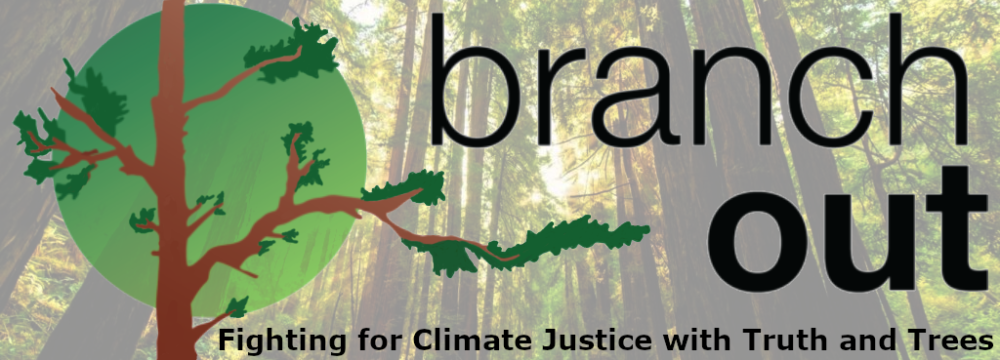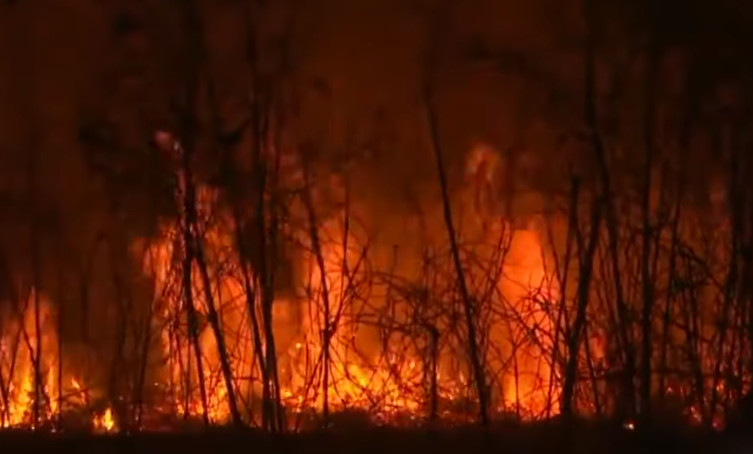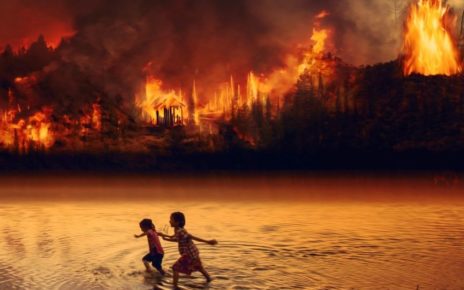Global Burning
This past August, a significant segment of world leaders attended the G7 Summit in Biarritz, France. The United States skipped out on the climate change discussion, where leaders turned their attention to forest fires, an often overlooked aspect of the climate crisis. Wildfires in the Amazon rainforest increased by an estimated 84% from the same time last year, according to a report by Brazil’s Institute for Space Research. The increasing number of fires in the Amazon region, attributed by many to Brazillian President Jair Bolsonaro rolling back environmental protection and enforcement, brought the issue of global fires to the forefront. Combined with blazes across the globe including in Siberia, Indonesia, and more recently in Australia, the Amazon burning has jump-started a conversation about the impact fires have not only on local communities but on the world’s climate system.
How does a blaze in remote regions of arctic Russia, the Amazon or Californa affect each of us and our planet? Whether ignition comes naturally from a lightning strike, as many in Siberian boreal forests do, or purposefully to clear land for agriculture, as has been the accusation against some parties in the Amazon or Indonesian islands, the same fundamental transition takes place during any forest fire: vegetation which once functioned as a sink for atmospheric CO2, burns into smoke, emitting organic particulate matter like black carbon and as CO2, and it releases energy in the form of heat from the fire. Looking at the system as a whole, this makes the greenhouse effect worse; trees no longer take in carbon needed to grow and provide themselves nutrients, and the carbon they once sequestered is released, adding to the concentration of greenhouse gases in the atmosphere.
Vicious Cycle
Forest fires create a positive feedback mechanism because higher global temperatures increase the intensity of fires, releasing more CO2 into the atmosphere which intensifies global heating. As the climate shifts at an accelerated pace away from pre-Industrial levels, the effect on global forests has manifested in mass deforestation. Higher summer temperatures in the Western US, for example, have increased annual fire count, extended the fire season by 9 days, and doubled burn area. Research from the American Geophysical Union projects that burn area will at least double once more by 2050.
While grim on its face, the situation at hand will not necessarily spiral to the point of forest extinction. At the same time as the positive feedback loop of higher temperatures increasing fires and in-turn increasing temperatures exists, wildfires have been an integral part of forest ecology since forests came to dominate parts of earth’s surface millions of years in the past. Fires have long been part of sustainably managing forests and can concentrate nutrients in the soil while clearing the land of dead brush and flora, ensuring the overall health of forests though causing great damage to living organisms in the process.
Although the natural process of forest fires provide some benefits, the science demonstrates that the current rate at which fires start and the increasing severity of fires is a net negative for climate stability. Without remedy, fires will become an even more serious issue in the coming years. Combined with the increased frequency of other disasters, from hurricanes to flooding to deadly heatwaves, survivors of climate disasters continue to bear the burden of burying their loved ones and cleaning up after the devastation these events bring.
Profit vs. Sustainability
Like many aspects of climate change, however, the potential for a few people to make short-term profits has overshadowed scientific modeling and warnings of the future destruction of the planet. Deforestation in the Amazon has notably paved the way for industrial agriculture to raise crops and livestock, making the land that once was the lungs of the earth into a commodity with greater immediate economic value. Intentional blazes in Indonesia clear land for the cultivation of lucrative palm oil. Fires in northern Russia were until recently allowed to burn unless it was financially detrimental to the government, as the fires often impact wholly unpopulated, sparsely populated, or indigenous lands without much economic value to the governments controlling them. These practices underscore the realities of land and forest management—unprotected, forests stand no chance when profit is able to be realized.
This raises the troubling issue of severely weakened natural resource protection within the United States, the wealthiest and most influential country up to the present. At the G7, POTUS remarked, “We are the number one energy producer in the world. It is tremendous wealth . . . I am not going to lose that wealth on dreams, on windmills, which frankly are not working that well.” Following up on these sentiments, on September 12th the Arctic National Wildlife Refuge opened its coastal lands to petroleum development lease offers under the executive branch’s Bureau of Land Management. While litigation will likely stall immediate development, the message from leadership rings loudly and clearly: federal policy is to disregard environmental impact as much as possible. It comes as no surprise for a President without expertise in any scientific domain, let alone climate, following up the aforementioned remarks with, “I think I know more about the environment than most people.”
Here, the underlying issue emerges; those charged with defending the public interest, especially under the 45th President, utterly fail to uphold the decades of precedent in protecting federal lands. Despite American innovation, entrepreneurship, creativity, and determination, those in power insist on attempting to revert to an imagined, utopian, white-washed past, where fossil fuels did, in reality, play an outsized role in accelerating the generation of wealth.
Solutions
Fortunately, we live in the twenty-first century, and like our ancestors, it is safe to assume the majority of us envision not only a livable future, but a prosperous one, for ourselves and our descendants. The science is in, and continuing to perpetuate carbon-based economic expansion will certainly leave our planet in worse shape if not uninhabitable. Change is arduous, at times costly in the immediate term, and certainly not without pitfalls. But any semblance of social equity in the long-term requires taking on the challenge head-on, without fear of what the future holds but rather resolute determination toward what we, as a remarkably capable species, may achieve.
Besides ending fossil fuel dependence, which is a different topic entirely, reforestation is the best thing we can do to protect the earth. Ireland recently pledged to plant 440 million trees by the year 2030. Earlier this year, Ethiopia embarked on a plan to plant 4 billion trees which will also help alleviate drought since trees help soil store more water. In 2016, almost a million volunteers in India planted 50 million trees in a single day, according to National Geographic.
In the Amazon specifically, the nonprofit Conservation International announced a plan in 2017 to plant 73 million trees in the Brazillian Amazon 2023. Conservation International could not be reached for comment on how the election of Balsanaro or the recent fires have impacted their plan.




One Reply to “Playing with fire: the vicious cycle of deforestation”